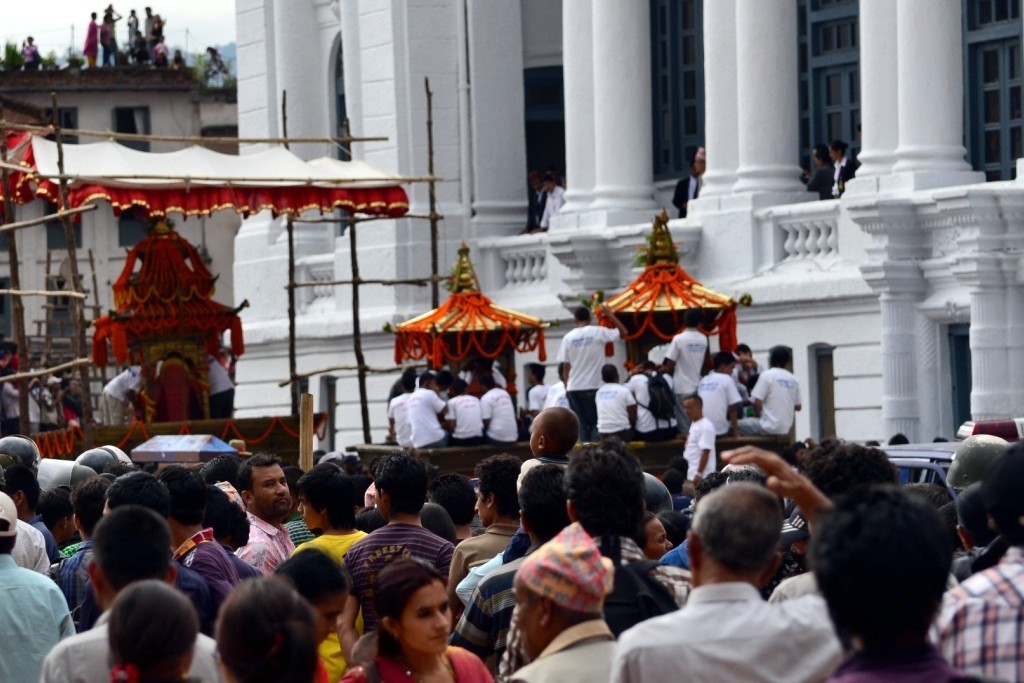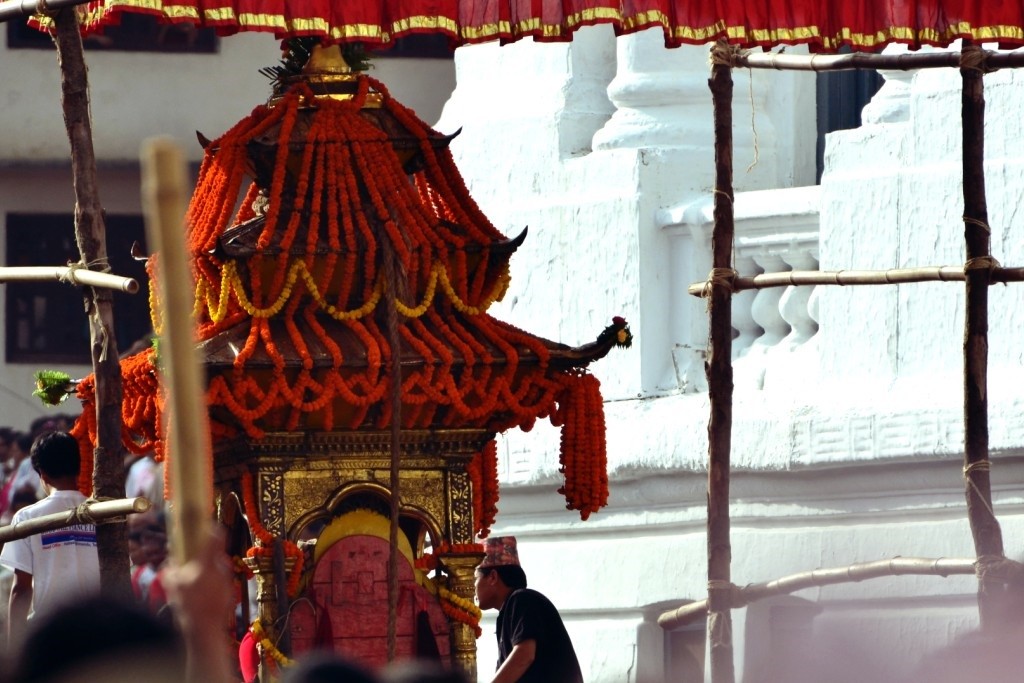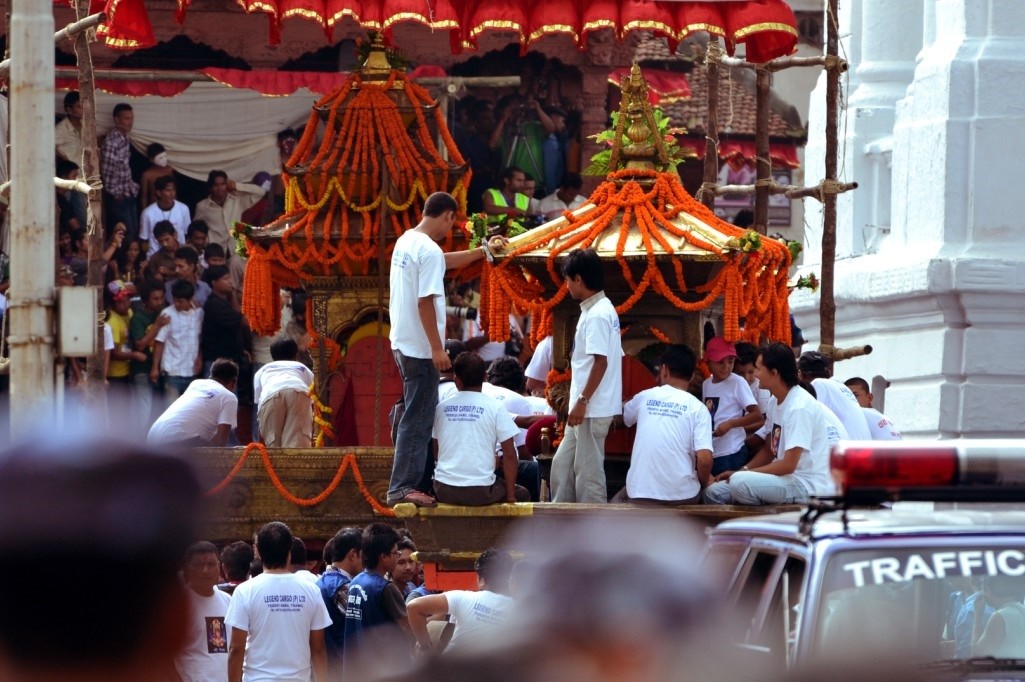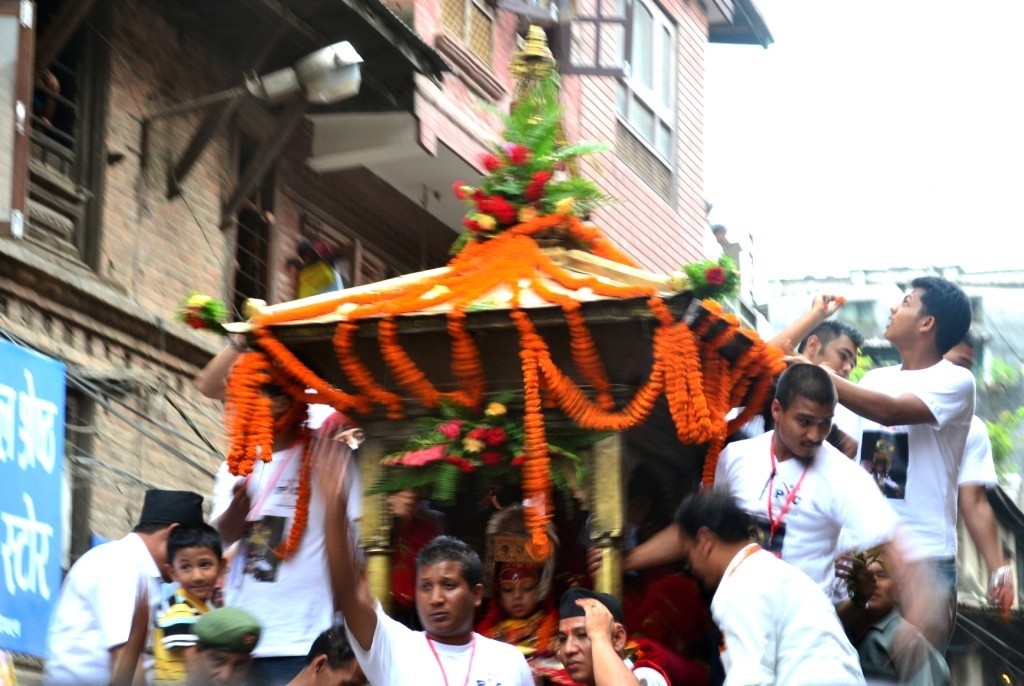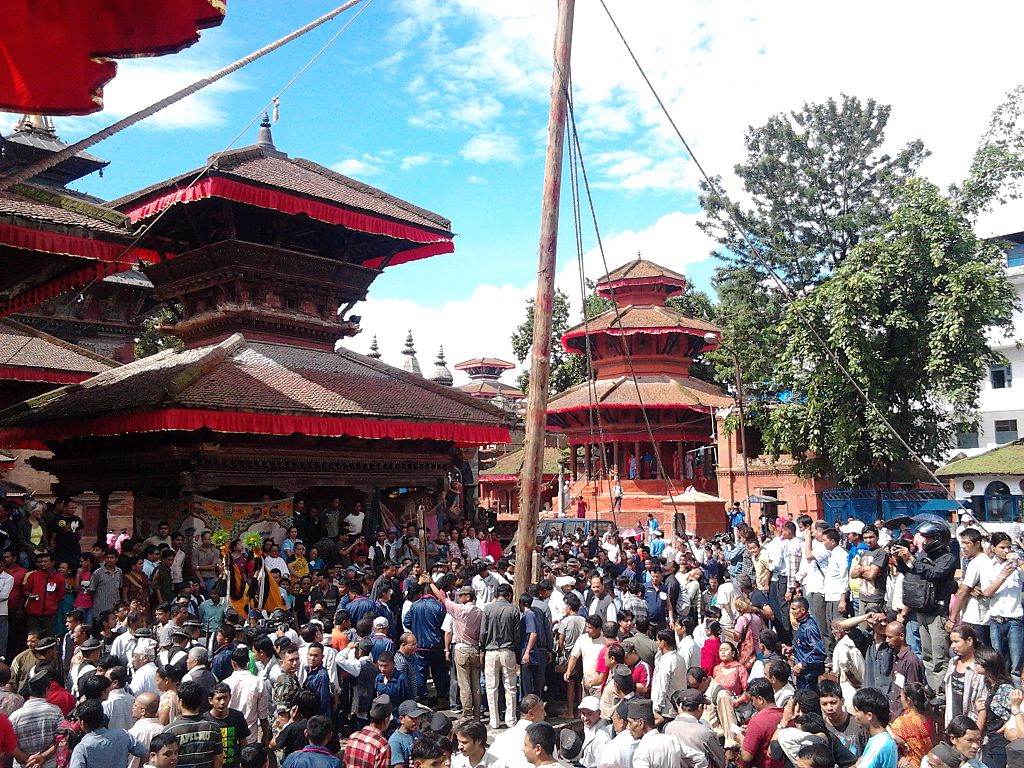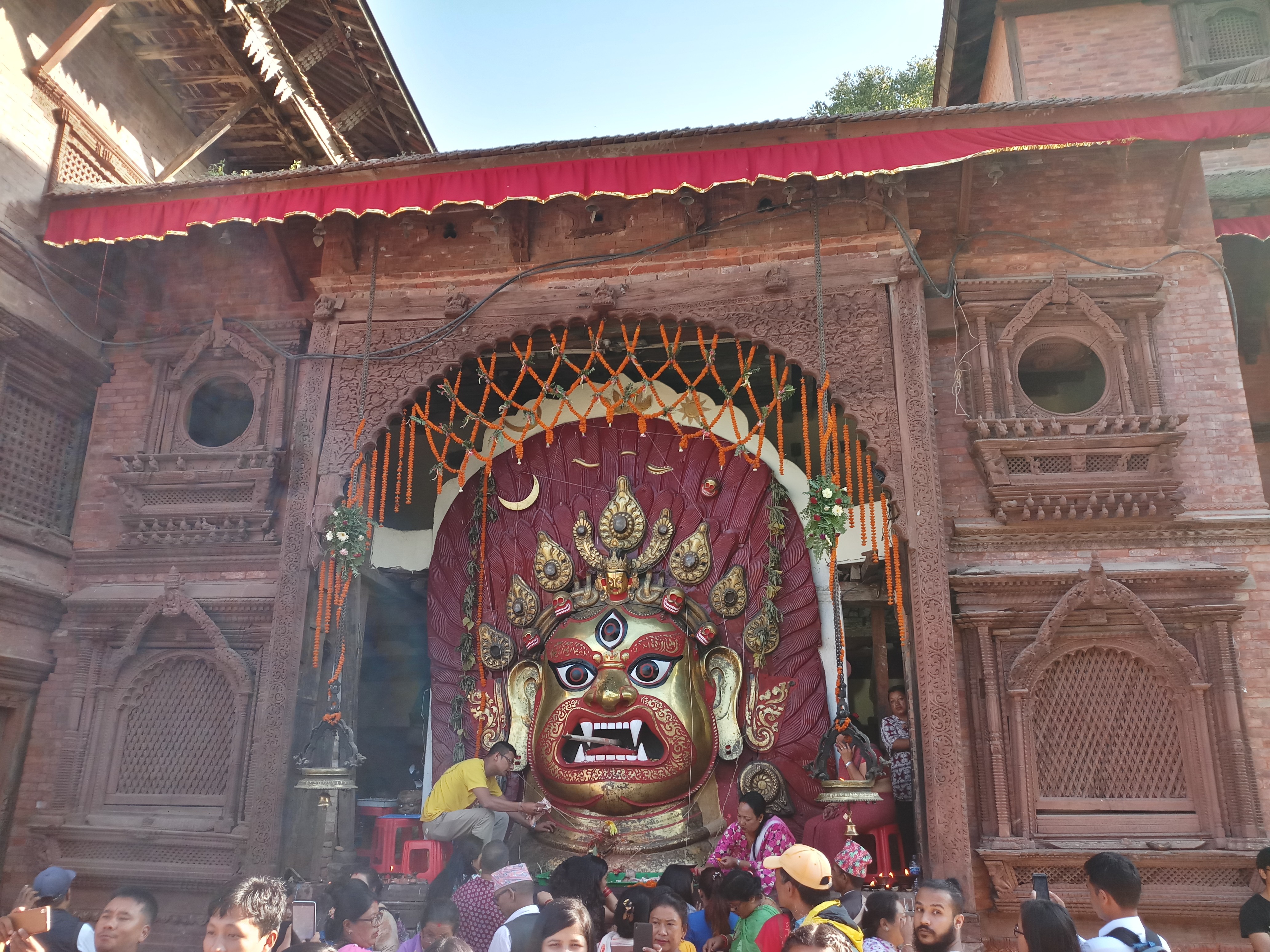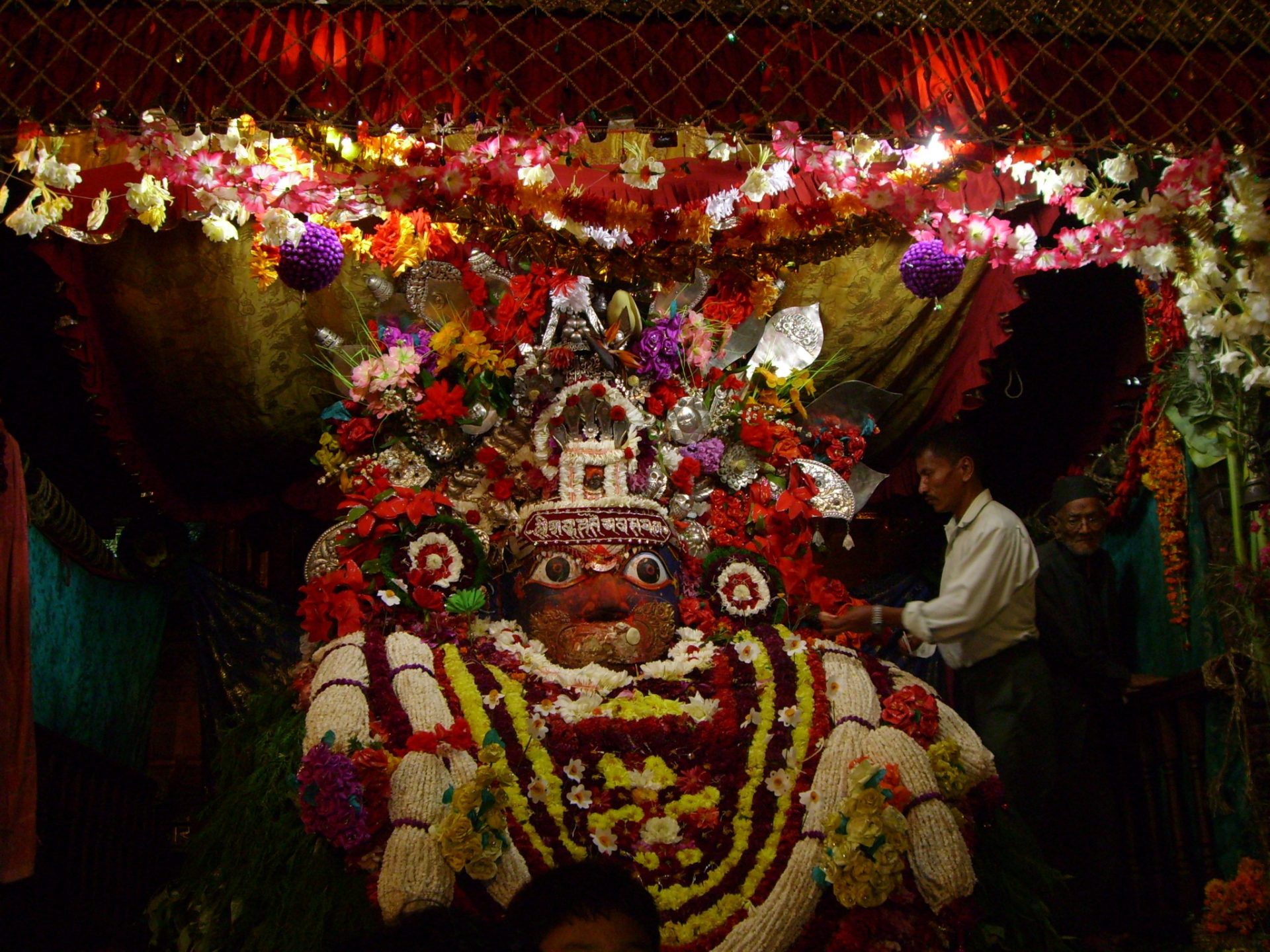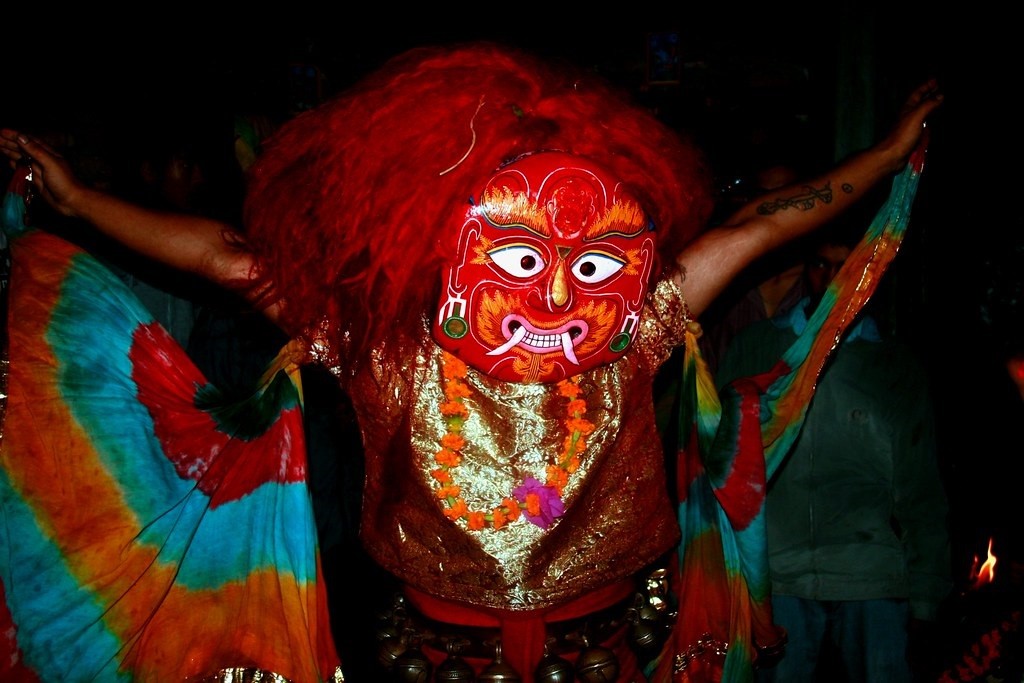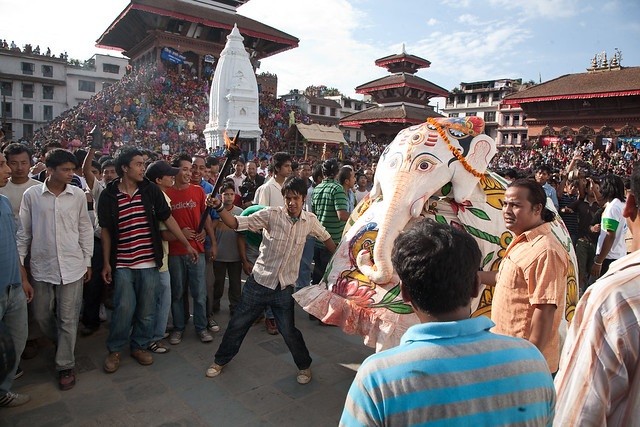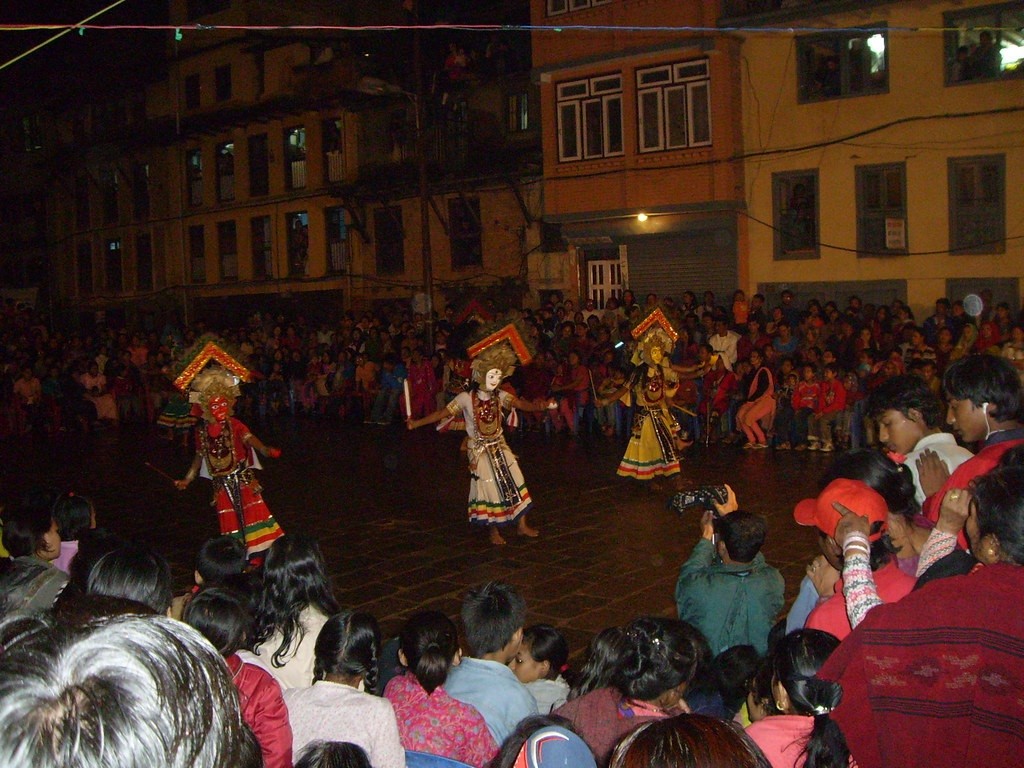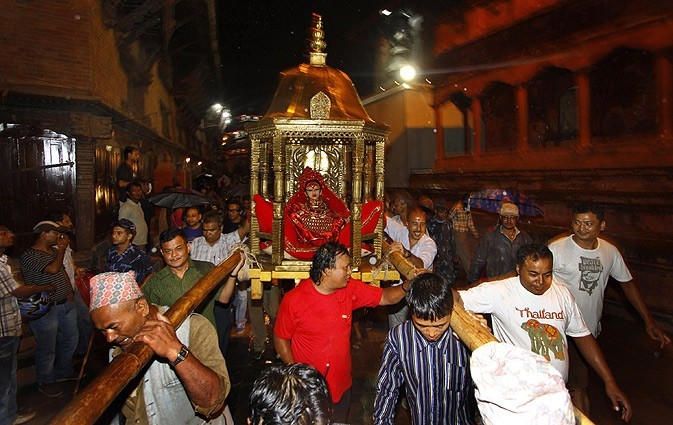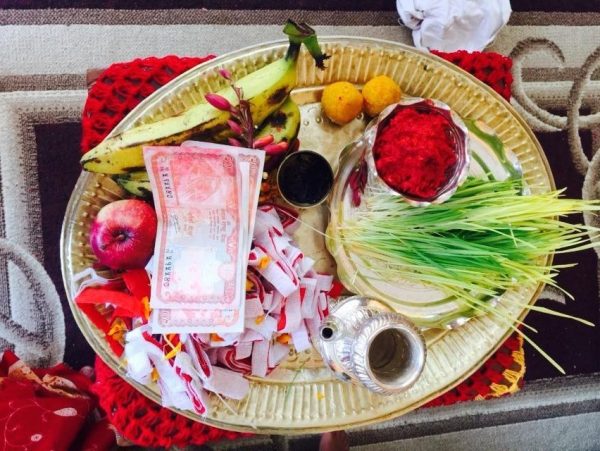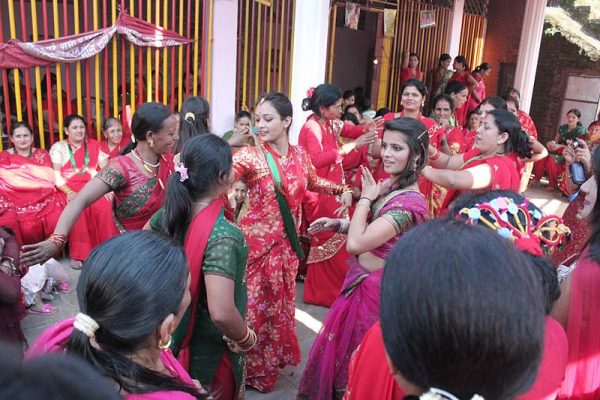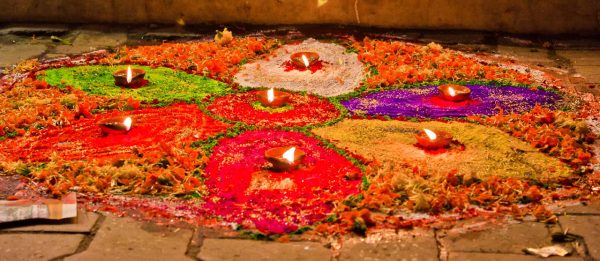Nepal is a country of lively culture, and every Nepalese rejoices numerous festivals enthusiastically throughout the year. Festivals in Nepal is an integral part of Nepalese culture that symbolizes the beliefs and customs of the country. Nepal is a land of innumerable cultures and ethnic groups and these festivals show the devotion of the people for their respective deity. The country’s heritage and culture are reflected in the vibrant festivals observed at different times in Nepal.
Every festival is distinctive in its way. Celebrating them while you plan to visit the country for trekking or tours with family, individual or school groups is a great opportunity to discover the affluence of Nepalese culture and heritage.
Among the several festivals, Indra Jatra is the main week-long festival of the Kathmandu Valley celebrated in late monsoon. The celebrations take place according to the lunar calendar, so the dates are variable. This year the festival falls on September 13, 2019, and is one of the most thrilling and well-regarded festivals of the Newar community of the Kathmandu Valley. This also symbolizes the advent of a month-long festival season of autumn. In the 10th century, King Gunakamadeva introduced Indra Jatra to commemorate the founding of the Kathmandu city whereas Kumari Jatra began in the mid-18th century.
In the Newari language, Kathmandu valley used to be called “Yenya Dey”, and Indra Jatra was popular as, “Yenya”. The meaning entails “celebration inside Kathmandu. Even nowadays, the day of Bhadra Purnima is generally denoted to as Yenya or Yenya Punhi by the Newars, and not as Indra Jatra. The term “Indra Jatra” was introduced much later. Locally known as Yenyā, the festival dedicated to the god of rain and king of heaven Indra, celebrated with much gusto and dedication and not only by Newars, but people of diverse ethnicities, and backgrounds in Kathmandu.
The Newars of Kathmandu valley celebrate Yenya Punhi or “Samaya Baji” festival by lighting up an artistic Diyo, named Dalucha and worshipping the same with worshipping ritualistically by offering Samaya Baji. The Samay Baji is an authentic ritual Newari dish comprises of various items – flattened rice flakes (cheura or baji), puffed rice (samaya, swaya baji), fried-saandheko black soybean, fresh ginger rhizomes, julienne and fried (palu, aduwa), marinated grilled or boiled meat (choila), dried fish fried in oil (sanya, sidra-maacha), boiled-fried eggs, fresh fruits, lentil patties (baara, woh), several kinds of Newari Mari breads, and alcohol (ailaa)
Legend behind Indra Jatra Festival celebration
According to myth, Lord Indra came down to the earth in search of Parijat flower for her mother on his ride “Airawat” elephant. They reached the jungle near “Ye” desh Kantipur. He ordered the elephant to stay in jungle while he went to fetch the flowers. He found a beautiful garden with abundant flowers and searched for the parijat flower. Indra disguised himself as a human and started to pluck parijat from the garden of a farmer named Yomari. The farmer noticed some intruder messing in his garden. Yomari annoyed with Indra of plucking flowers without permission and tied him with a rope. Indra attempted all his power to break free from rope but it went to vain. After Indra realized that the farmer uses his tantric power in the rope, he unveils his identity. Indra told the reason for picking the flower and requested him to set free. However, the farmer denied to release him since Indra stole the flower which is an offense and punishable.
So as a punishment of plucking flowers without permission he was tied up and put for display in the town square of Maru in Kathmandu where people from all around came to watch him. Meanwhile, Airawat who was waiting in the jungle started to get anxious for his master, Indra. As he went to search Indra in the town, locals were amused to see the mystic white elephant and attempted to seize him. Airawat was bothered by the deed of the locals so he started to destroy everything. Despite failing to catch it, people were so amused that they started running behind it.
When Indra didn’t show up for a long time, his mother appeared on the earth in search of her son. Also known as Dakini Devi, Indra’s mother wandered around the town to search her son and finally found that her son is captivated by the farmer. Indra’s mother requested the farmer to forgive and release him. Then the farmer refused to set him free. Halcho Bhaila’s manifestation of Mahadhyo appeared in the town and asked people to release Indra. As the Bhairav, manifestation of Mahadhyo were people’s respected god, the farmer could not reject their order. The farmer (Yomari) also realized that he was getting too hard on Indra and release him. Dangi was very glad and also impressed with love for plants. So she promised to provide them with enough fog and dew during the winter for better productivity. It is thought that Kathmandu starts to experience foggy mornings from this festival onwards because of this blessing.
Yomari showed his gratitude towards Dakini for blessing and requested Indra that they would like to celebrate this incident as a festival every year. Lord Indra could not refuse the humble request of people and gave his banner “Hari Patah” to display the flag towards the sky so that he would know its time to come for the festival. This banner will prevent evil spirit to enter the land. Every year, this story is presented through the parades, dances, and music during the eight-day celebration of Indra Jatra. Also, the idol of Lord Indra in captivity is shown during the festival. As time passed by, various other procession was added to the festival-like Kumari rath, Devi Pyakha, Mahakali Pyakha, etc.
According to belief, the first Malla king brought the Goddess “Taleju” – a Hindu Goddess with him. The Malla kings used to have a direct conversation with the Goddess “Taleju”. The Goddess later denied having a personal conversation with the king due to the wrong deed of one of the Malla kings. Nevertheless, several years of penance, the Malla king succeeded to convince the Goddess to appear in person. The Goddess agreed to appear as the Living Goddess Kumari. So, both “Taleju” and “Kumari” is the similar Goddess, only a different name for a different belief.
When a demon called “Lakhe” didn’t find his patron Goddess “Taleju” simply trailed in the footprints of the Malla king and ended up at the Hanumandhoka where the Malla king preserved “Taleju”. Therefore, the Lakhe dance merely portrays how the demon went in the search of Goddess Taleju.
According to another legend, the three Lords (Brahma, Vishnu, and Maheshwar) sent Lord Indra as a representative along with an “Indra Dhwaja” (victory banner) when the war preparation between gods and demons was going on.
In the war, the deities conquered over demons and the Indra Dhawja was worshipped, and the ritual ever since continued. With the purpose of bringing out happiness and fortune, Indra Dhwaja is erected and worshipped. It is believed that Indra had received this Indra Dhwaja (flag) from Lord Vishnu for protection
The significance of this festival even implicates Nepal Unification times. It is on this day that King Prithvi Narayan Shah conquers Malla King Jaya Prakash Malla in the seizing of Kantipur valley.
Highlights of Indra Jatra
Erection of Ceremonial Pole
The erection of ceremonial pole marks the beginning of the Indra Jatra Festival. The great care is taken to select the lingo or wooden ceremonial pole for this festival. And the special ritual ceremony takes place to select the trees wood for ceremonial pole.
For the selection of wooden pole, the goat release in a forest after worshipping using “Tantric power”, and the tree it touches is brought down. The tree is worshipped ritually and prepared into a Lingo on the day of Ekadashi. Since the lingo is supposed to be straight, it is not easily available in any of the forests. That is why every year the forest is chosen with great care for lingo selection from any one of either Bhaktapur or Kavre districts.
The 36 feet long ceremonial pole made of pine brought from Kavre or Bhaktapur, on the day of Bhadra Shukla Dwadasi are installed at Basantapur Square in front of the old Hanuman Dhoka Palace. The erected lingo is then called, “Indradhwajotthan”.
Exhibition
The ceremony showcases giant masks of Akash Bhairav at Indrachowk and Seto Bhairav at Durbar Square. Seto Bhairav is one of the several wrathful forms of Shiva who protects the Kathmandu Valley, is unveiled only on the occasion of Indra Jatra each fall. The gruesome appearance of Seto Bahirab is put on a show and for the next three days, his horrific face stares the entire proceeding.
Akash Bhairava’s head is associated with the Mahabharata story. It is also believed that the head of Aksh Bhairav represents the head of the first Kirat King Yalamber. During this festival, Newari ethnic groups flow Jaad (home-brewed beer) into the mouth of Bhairav which later competes to get a sip.
Another popular one is Indraraj Dyah with extended hands tied with rope on a soaring platform at Maru near Durbar Square and Indra Chowk, which are showcased.
Likewise, the ten avatars (incarnation) of Lord Vishnu are displayed in the Tri Lok Narayan Temple, in front of the Kumari Ghar (House of Kumari). The “Manandhar” community of the Kathmandu valley prepare a garland out of bamboo and lit on fire and make rounds of the valley. In addition, Buddhists also celebrate Indra Jatra for the prosperity of their family members.
Another major attraction of the evening will be a display of the lavish variety of the well-known Samay Baji and other food of the Indra Jatra feast. A little red clay vessel of rakshee (local liquor), and Jaad (local beer), chhang or thon (the milky white, tart, slightly sweet liquor made from fermented rice) is placed around Samay Baji display. The whole food items are carefully chosen according to traditions and customs that are being offered to goddess Kumari, Shree Ganesh, and Seto and Kalo Bhairav. There are many displays of Samay Baji in the different areas of Kathmandu, Bhaktapur, and Patan.
In this exhibition, the smoked entire fish is kept on top of Samay Baji tower, which signifies blessing and fortune for the coming years ahead. Toward the end, Samaya baji will be shared and distributed among devotees as an auspicious sacred food.
Ritual Masked Dance
The significant aspects of Indra Jatra are a ritual dance featuring masked demons, deities during chariot procession in different parts of the valley.
During the festival, masked dances in the form of deities and demons are performed among which Majipā Lākhey is the most well-known dance. The word Majipa derived from the word Manjupattan which means ‘the city established by Manjushree’ and Lakhey comes from two Nepal Bhasa words “laa” meaning meat and “khen” meaning egg means a carnivorous demon and thus meaning to ‘the carnivorous demon of Majipa.’ The Lakhey dances in the music and moves ahead in the procession.
Likewise, Pulu Kisi (elephant) dance is also shown by the locals dressed a white-colored elephant structured attire wrapping their entire body. The white elephant represents Lord Indra’s transporter and therefore the dance of the elephant is celebrated with gusto. The elephant roar and does some mischievous things from time to time and swing the tail which is funny to watch.
The Sawa Bakhhu Dance is performed by a dance group in Halchowk. The dance continues along the festival route, stops at the junctions and receives an offering from the devotees. The dance is characterized by the Bhairab (in Blue) with a sword and two attendants (in Red).
Devi Pykhan is performed at Kilagal, Hanuman Dhoka, Jaisidewal, Bangemuda, Indra Chowk, and Kilagal. Dancers wear the mask of different gods and goddesses such as Bhairab, Kumari, Chandi, Kawan, Beta and Khya. It is believed that this dance is performed for peace to people suffering from diarrhea.
The Mahakali Pykhan is performed at Bhaktapur in Durbar Square and the streets of Kathmandu. The characteristics feature of the Mahakali dance is the representation of the Khyah, a fat, hairy ape-like creature. The dance performed is full of fun and humor with a lot of falling.
Chariot Procession
The chariot of Bhairav, one of the forms of Lord Shiva, Kumari, the living goddess, and Ganesh, the elephant-headed god is taken out in the procession through the main streets of Kathmandu. The energetic men, powered by local alcohol, pull the chariots around the Kathmandu Durbar Square.
The first day of the chariot procession is considered the main day of the festival. The chariots of Living Goddess Kumari also known as Kwaneyā, Ganesh, and Bhairav are pulled through the southern part of the town.
The heads of the state also visit Hanuman Dhoka to pay their respect to the shrines. Also, during this day, the participants offer wick lamps on clay dishes to honor deceased family members who pass away in a year. This is known as Upaku-wonegu.
Therefore, some people consider that the main purpose of celebrating Indrajatra at the time of Licchavi was to make special offerings to the souls of departed loved ones before celebrating a grand festival called Dasain.
In the night, after Kumari returns back from the procession accompanied by the traditional musical band, another procession of Dāgin beings. The goddess Dāgin represents Indra’s mother roaming around town in search of her son. When the Dagin procession returns from the upper part of town and reaches Maru that is the signal to start Bau Mata procession. Bau Mata involves an illustration of a divine snake made of stems on which a row of oil lamps are placed. Then that image is suspended from poles carried on shoulders and taken along the processional route.
The second day is the full moon day called Yenya Punhi. Thaneyā is the second day of the chariot procession where the chariot is dragged through the northern part till AsanThe third day is known as Nānichāyā. The procession passes through the central segment at Kilāgal. Since 2012, the palanquin of Kumari has been drawn by a women’s group on the third day of the chariot festival.
On the final day of the festival, the Lingo that carries the Indra Dhwaja is dragged down and floated away in the Bagmati River which marks the end of festivities.
The entire week festival incorporates traditional dance, feast and witnesses the chariot of Goddess Kumari, Lord Ganesh and Lord Bhairav being pulled through the older parts of the Kathmandu city. A day has been added to the original seven days of celebration and on that day called Nanicha yaa, the chariots are dragged through places like Naradevi, Nhyokha, Ason, Indrachwok and Hanuman Dhoka. This additional day of chariot pulling was introduced by King Jaya Prakash Malla in 1765 B.S.
Query related to Indra Jatra?
If you also want to experience the delight of this magnificent festival, then it is a great opportunity to participate while you are in Nepal . The grand celebration will certainly bring a great amount of excitement and enduring memories.

